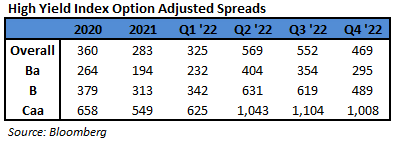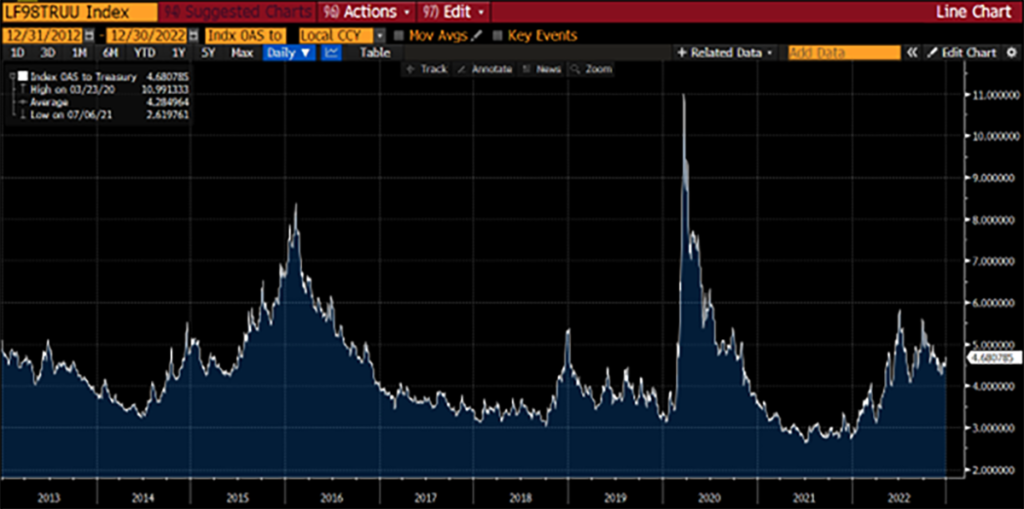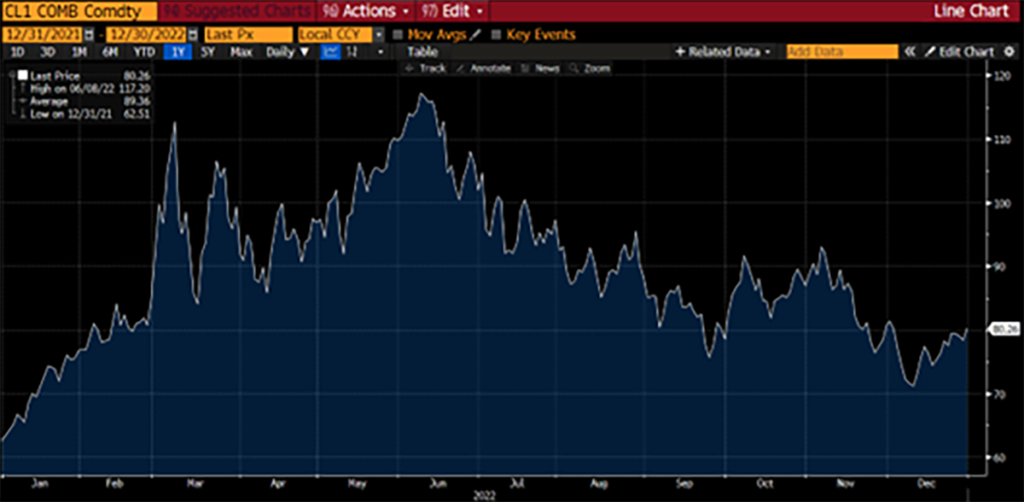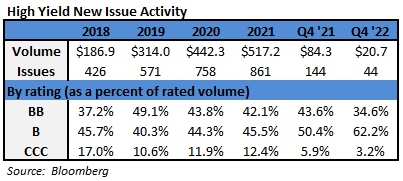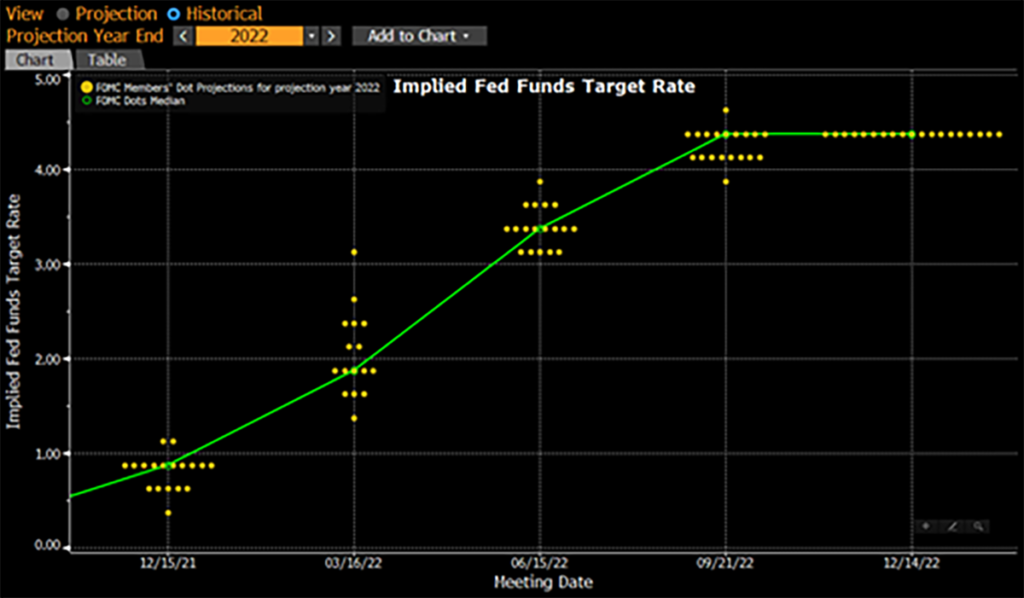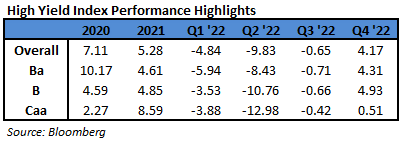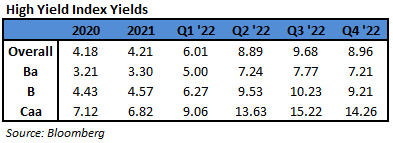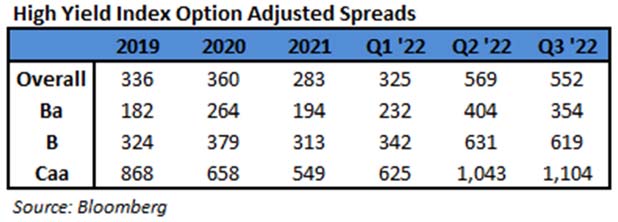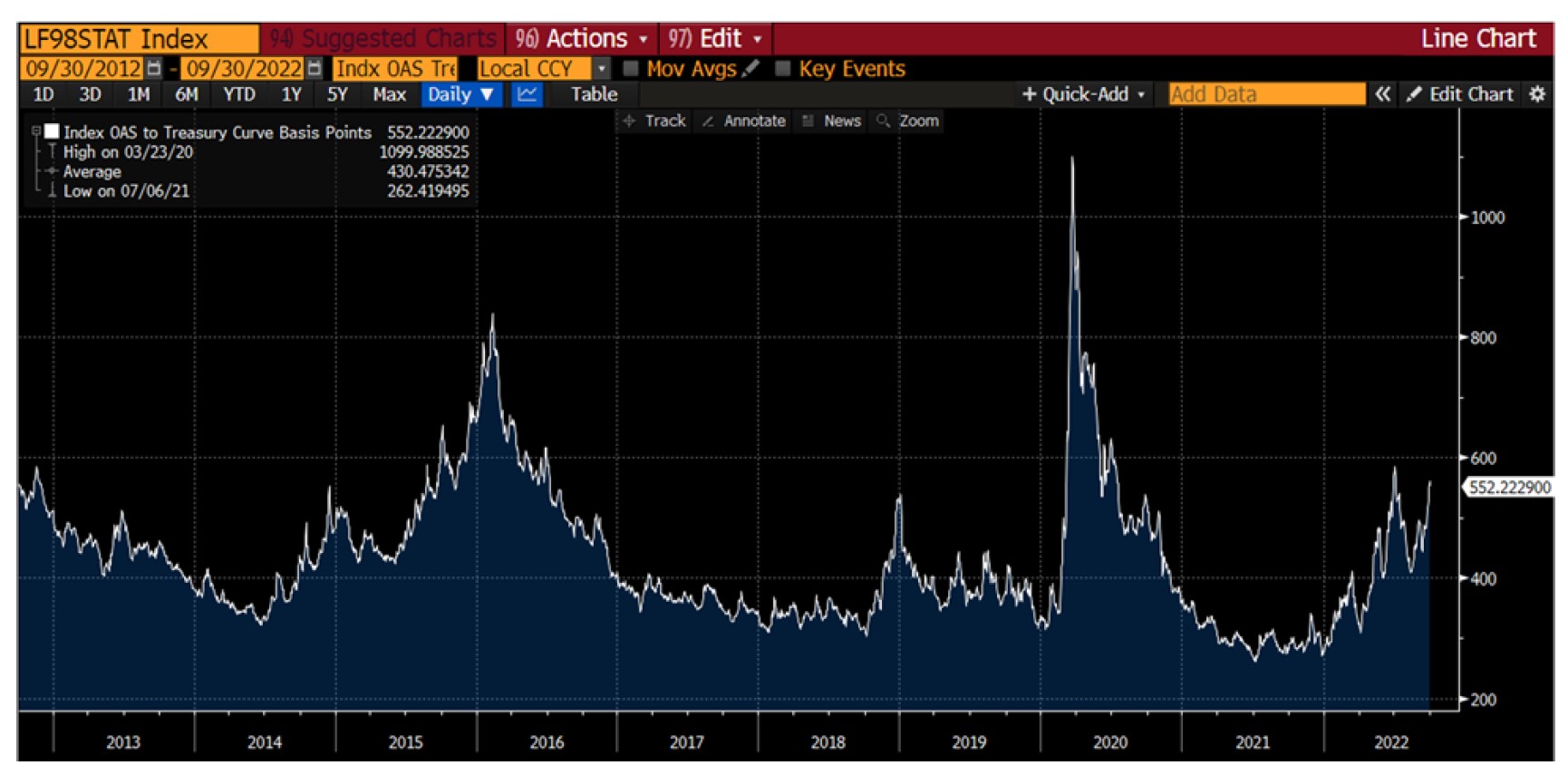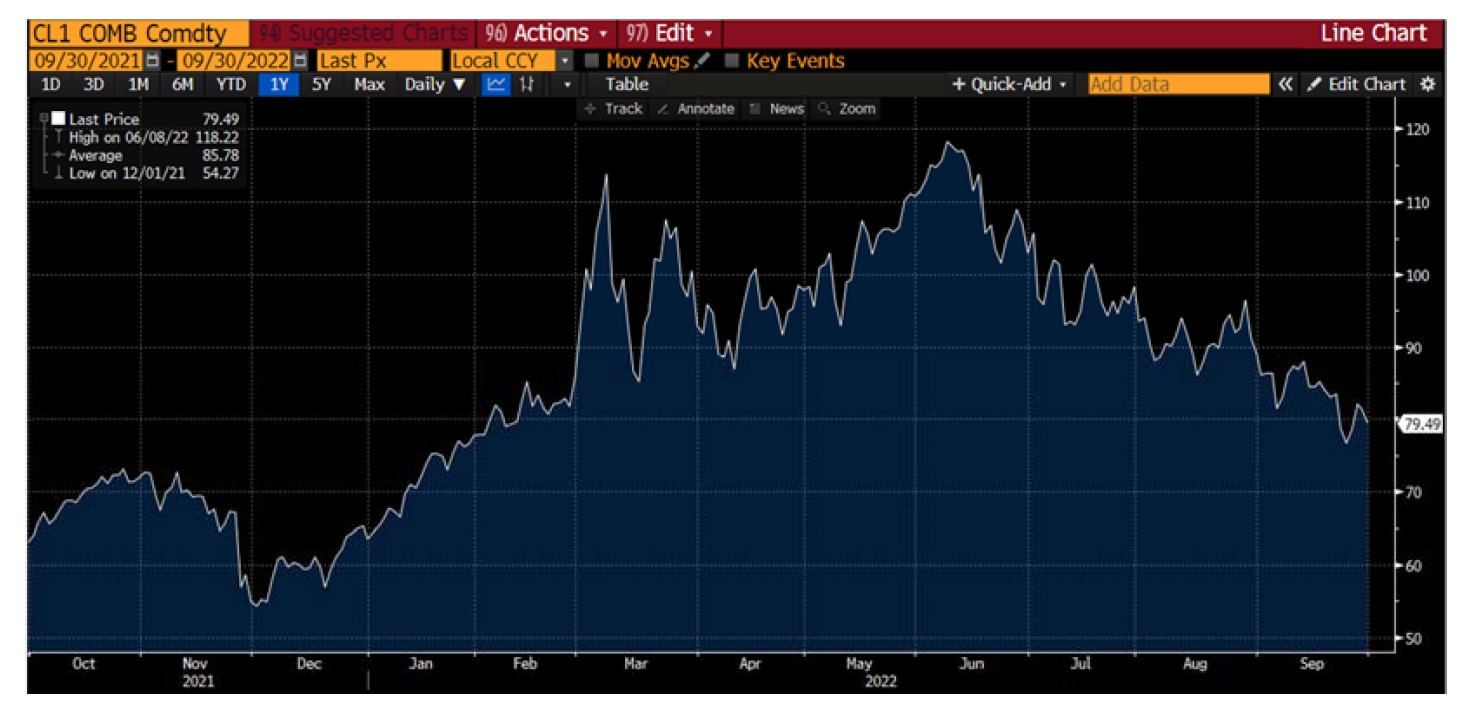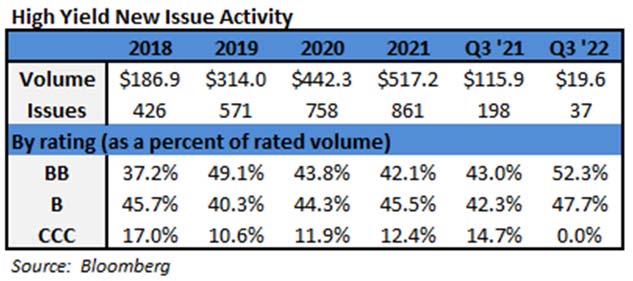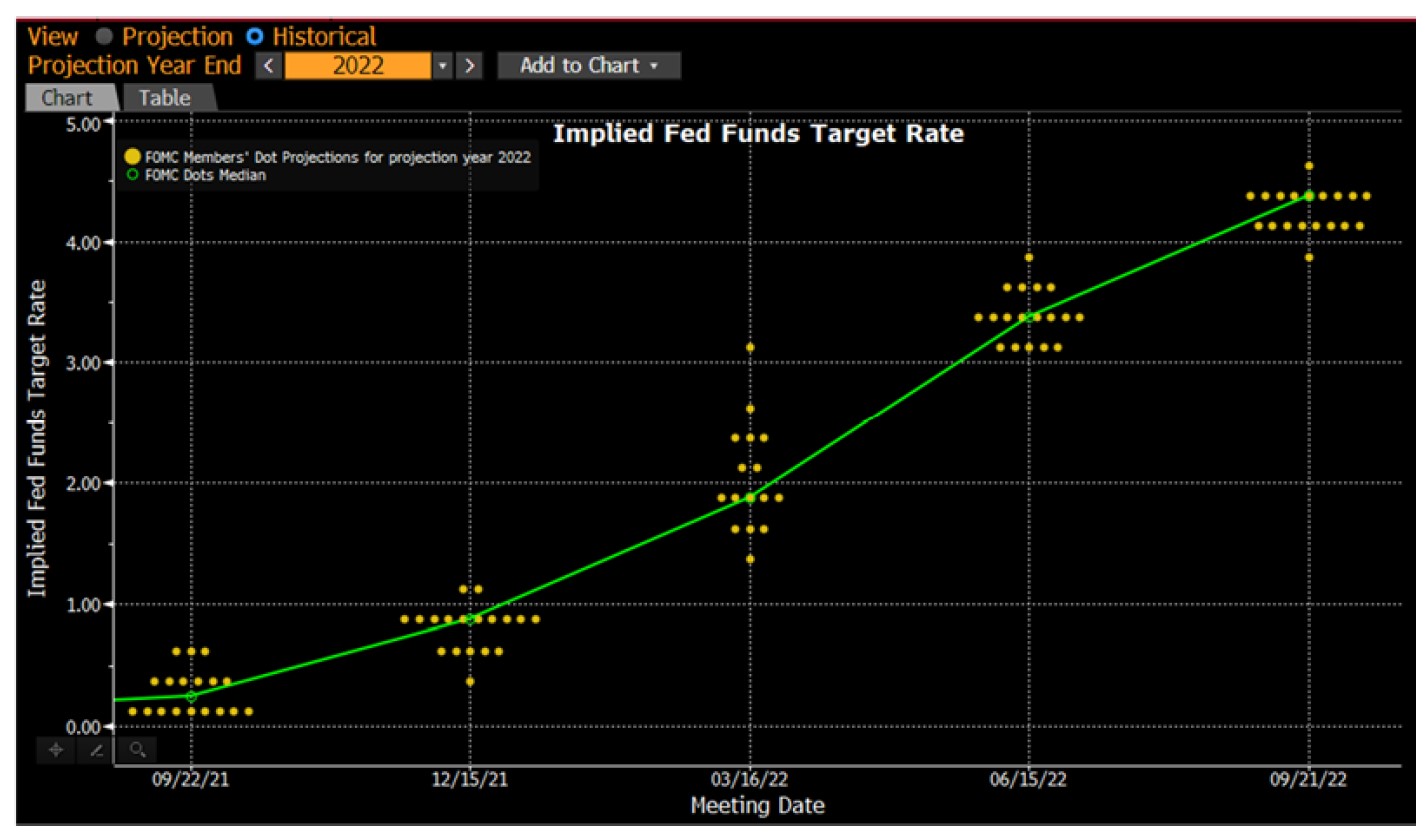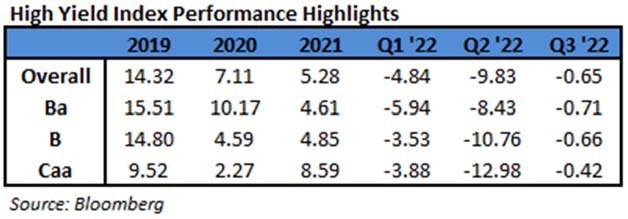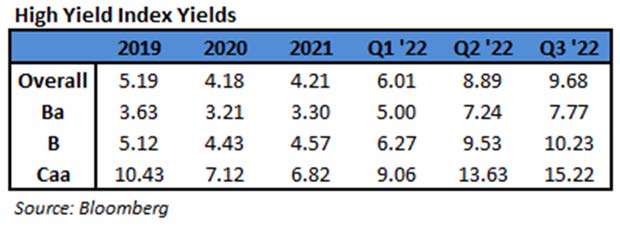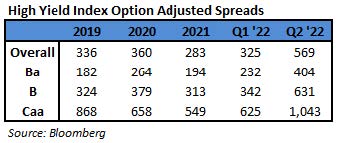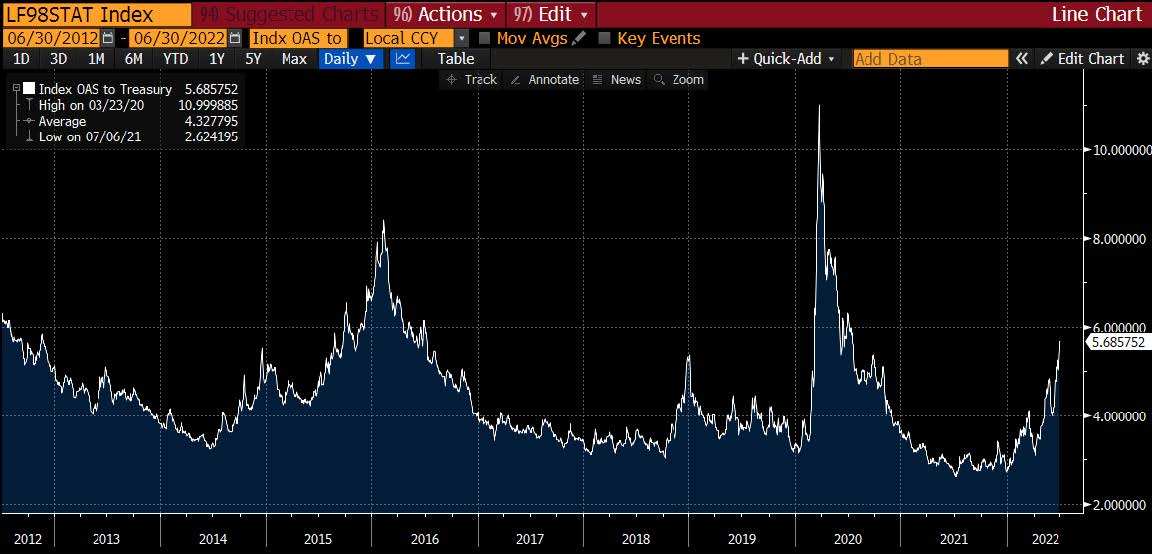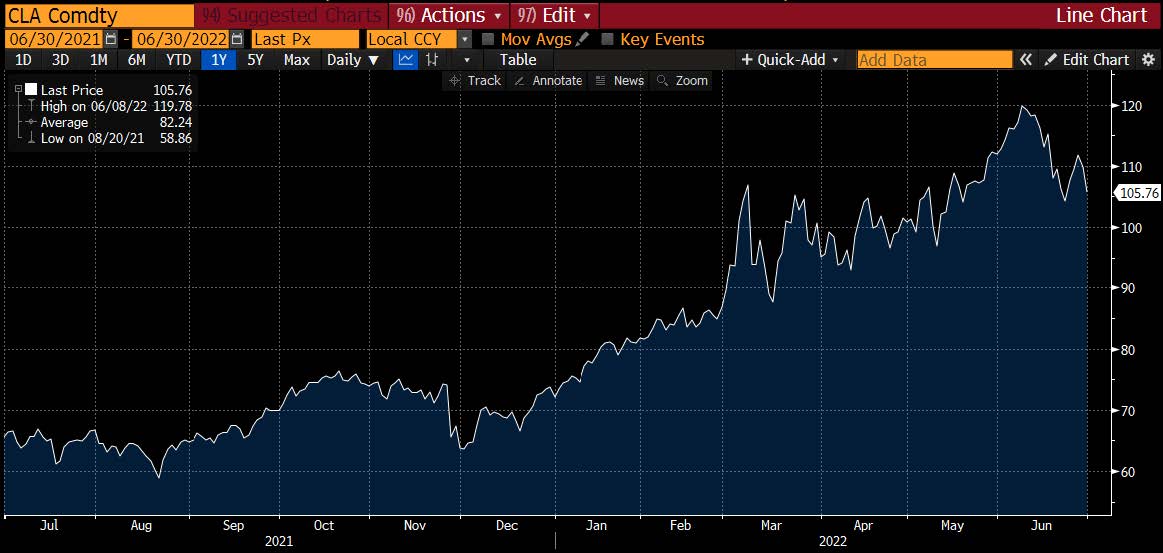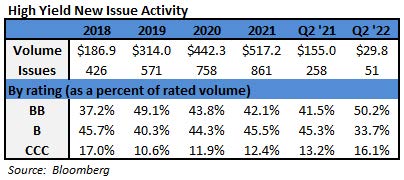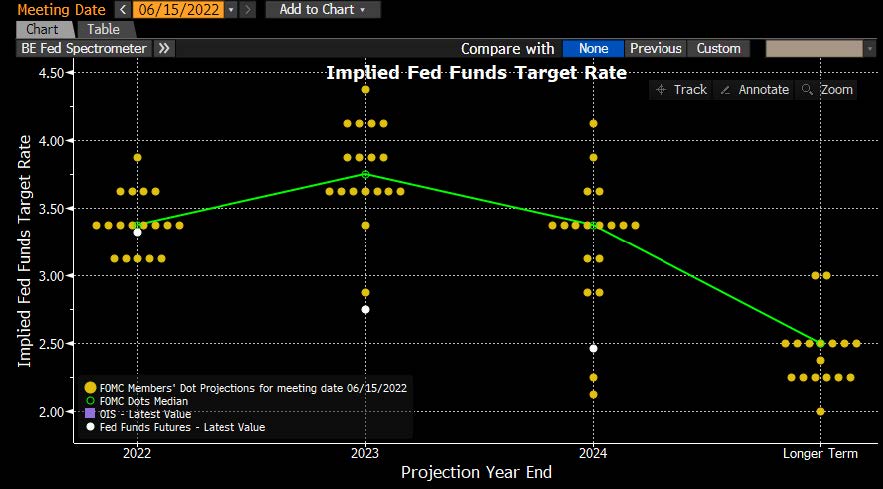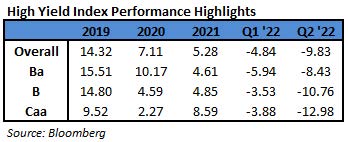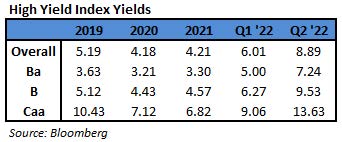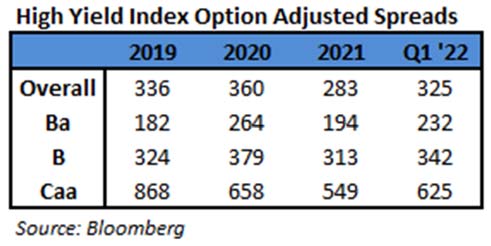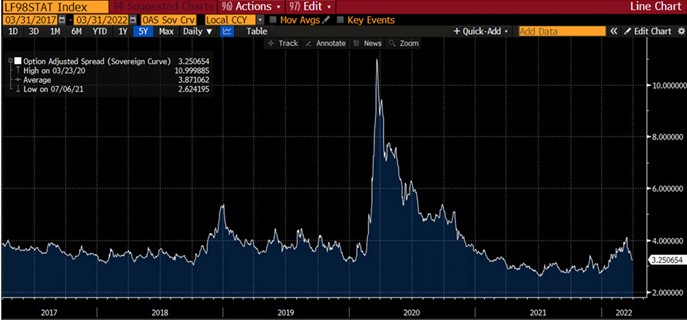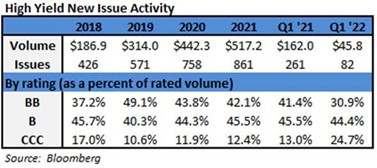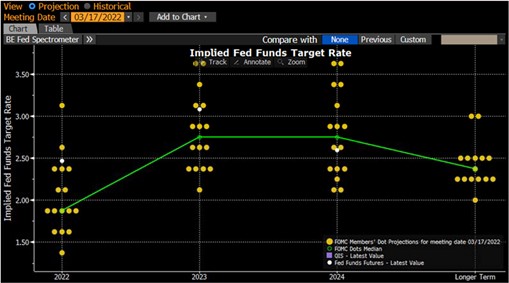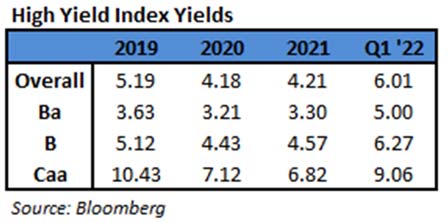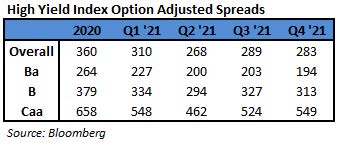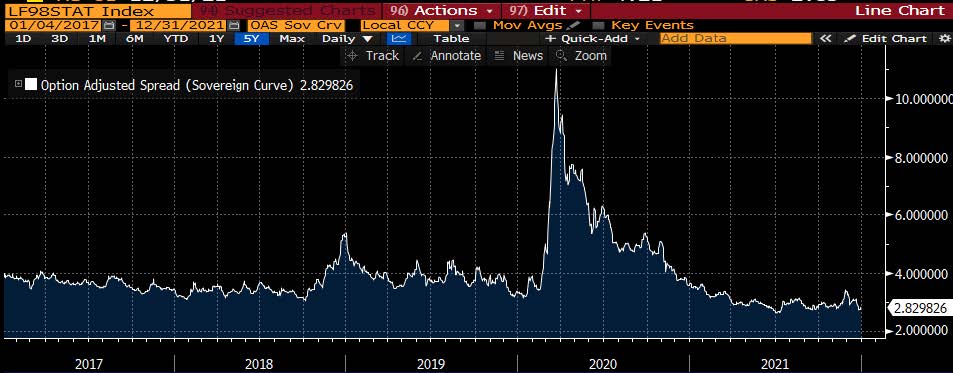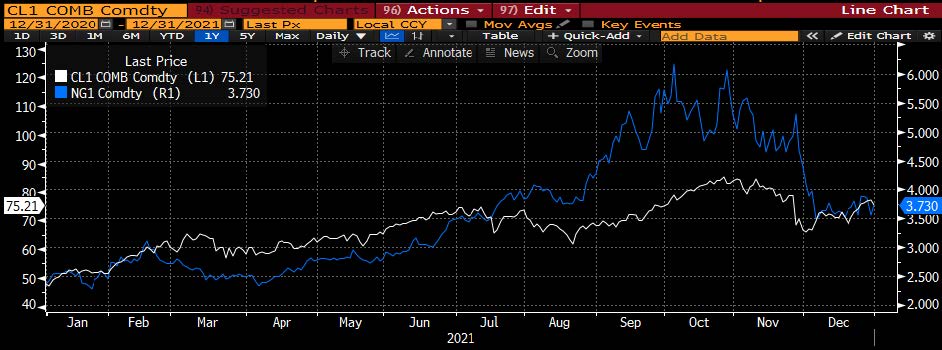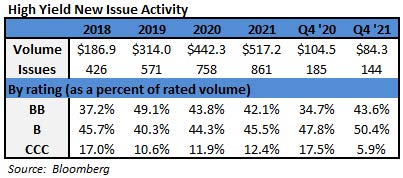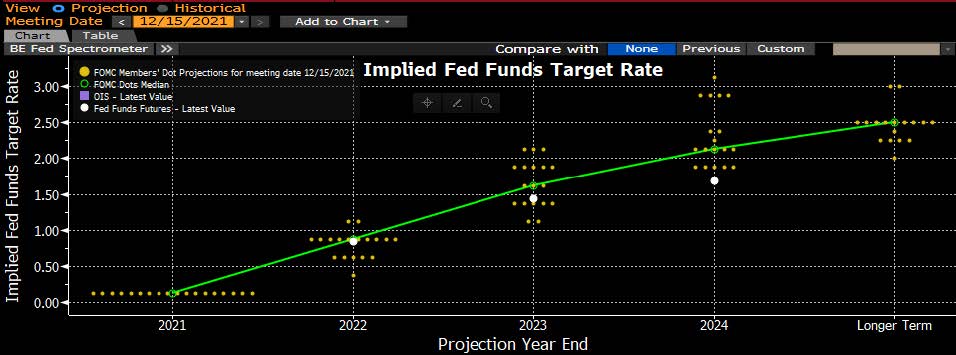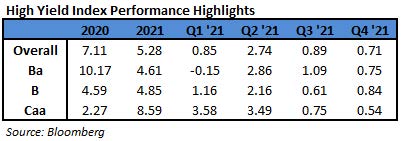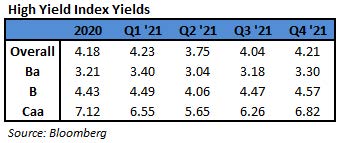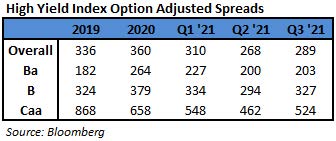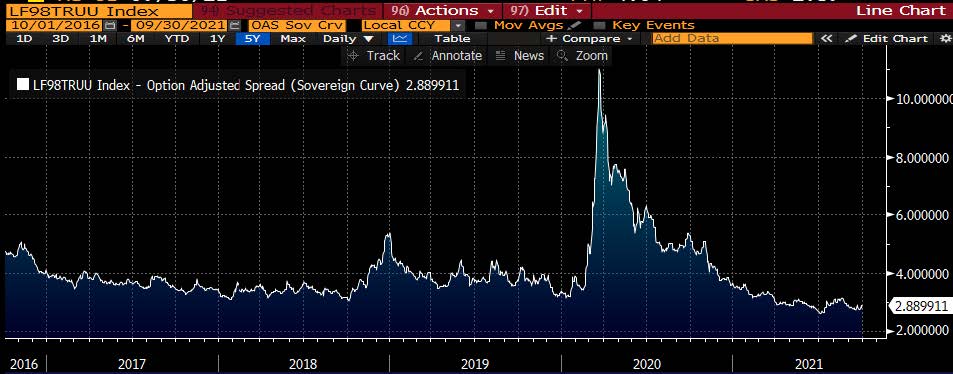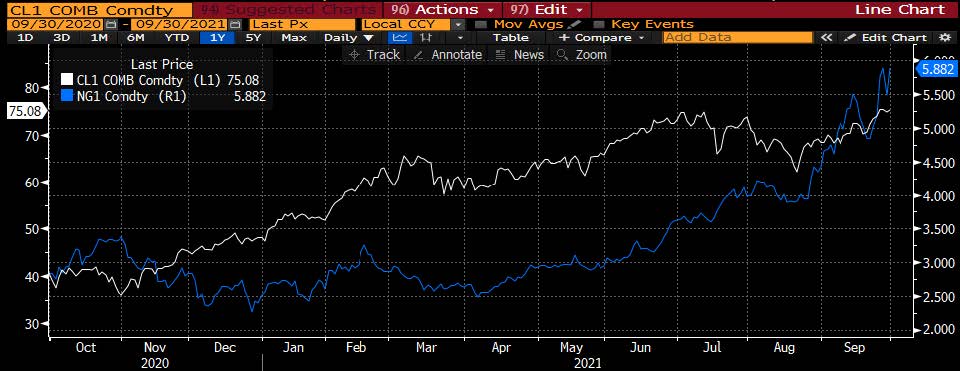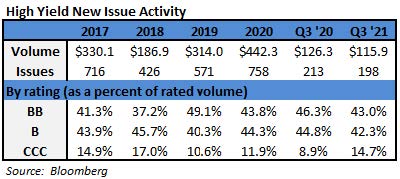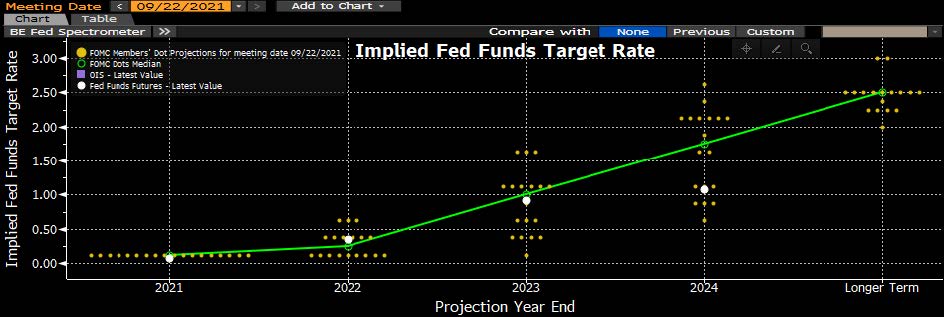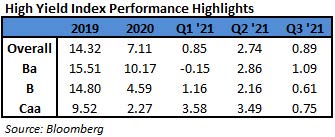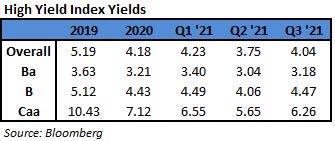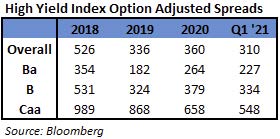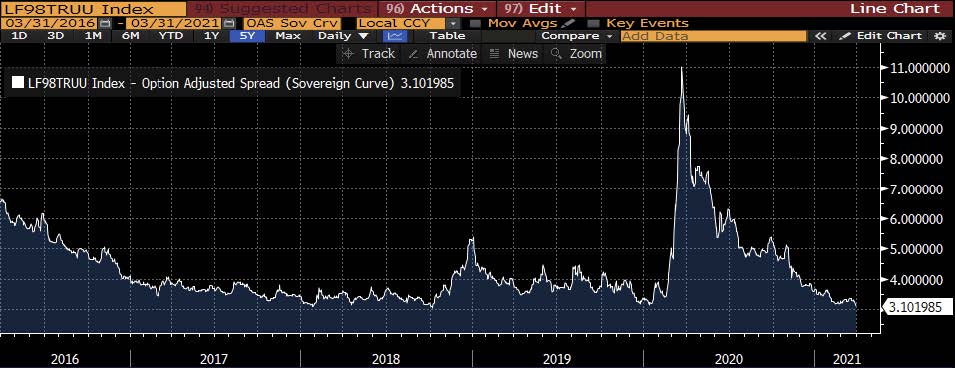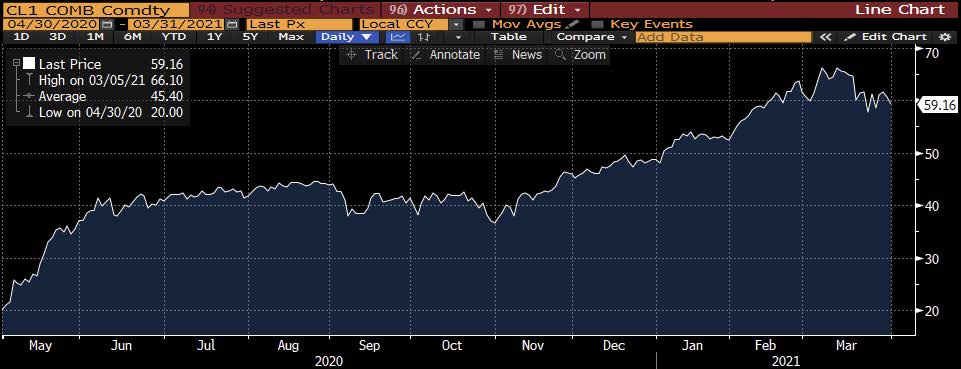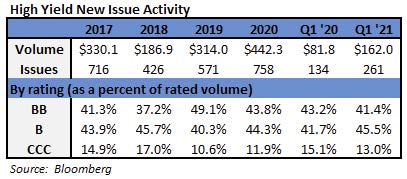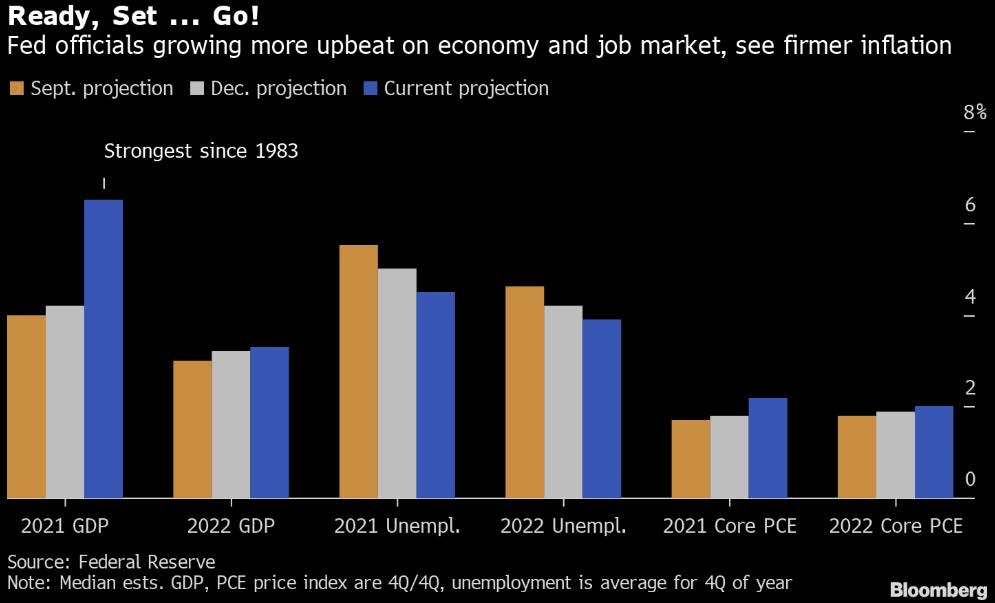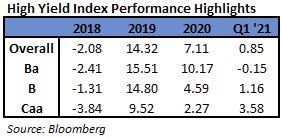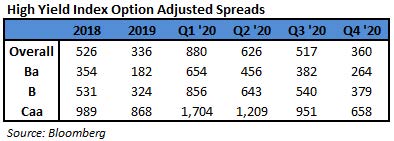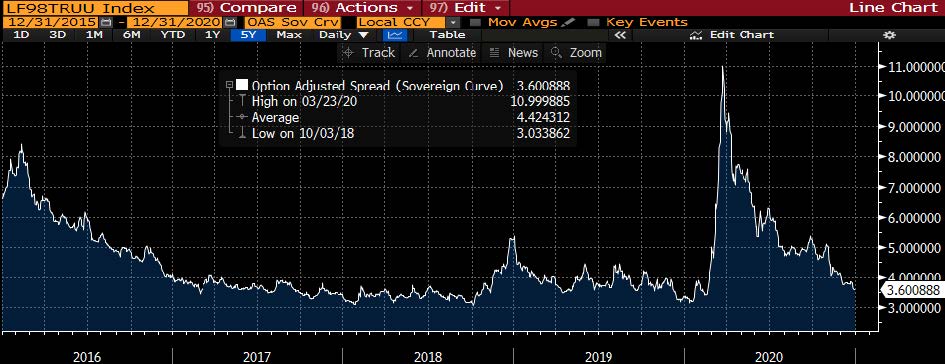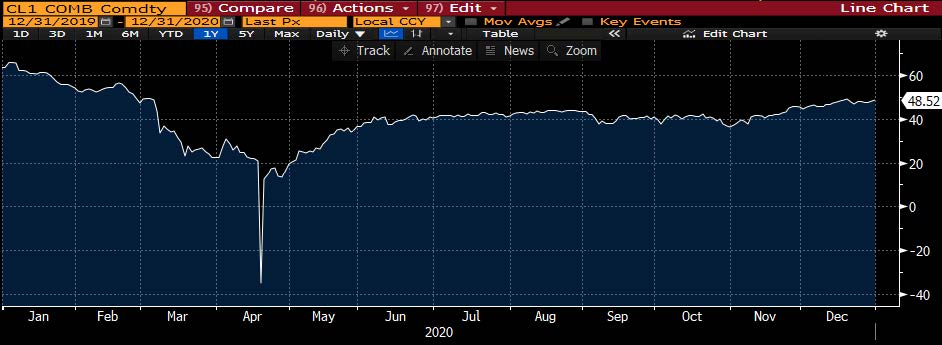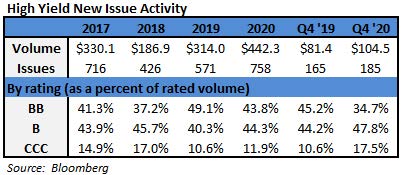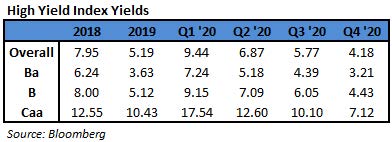
In the first quarter of 2023, the Bloomberg US Corporate High Yield Index (“Index”) return was 3.57%, and the S&P 500 stock index return was 7.48% (including dividends reinvested). Over the period, while the 10 year Treasury yield fell 41 basis points, the Index option adjusted spread (“OAS”) tightened 14 basis points moving from 469 basis points to 455 basis points.
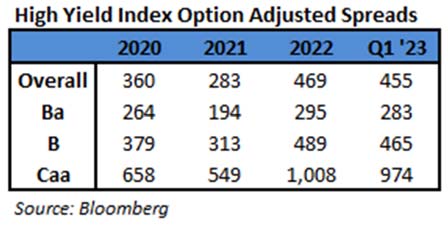
All ratings segments of the High Yield Market participated in the spread tightening as BB rated securities tightened 12 basis points, B rated securities tightened 24 basis points, and CCC rated securities tightened 34 basis points. The chart below from Bloomberg displays the spread moves in the Index over the past five years. The average level over the five years is 406 basis points.
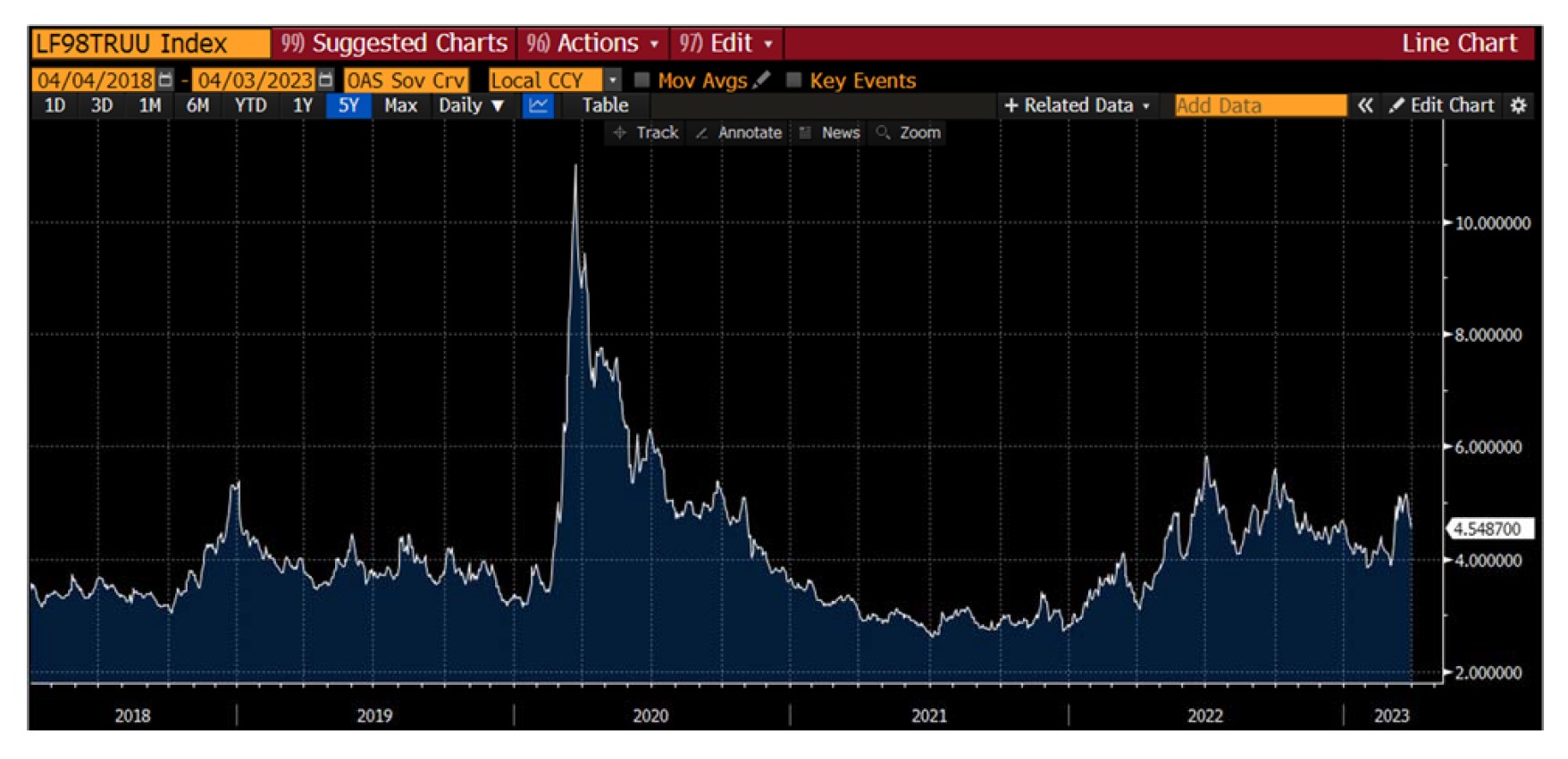
The Brokerage, Consumer Cyclical, and Transportation sectors were the best performers during the quarter, posting returns of 5.02%, 4.80%, and 4.75%, respectively. On the other hand, Banking, Communications, and REITs were the worst performing sectors, posting returns of ‐0.40%, 0.78%, and 1.18%, respectively. At the industry level, leisure, building materials, and healthcare all posted the best returns. The leisure industry posted the highest return of 9.38%. The lowest performing industries during the quarter were office REITs, wirelines, and retail REITs. The office REITs industry posted the lowest return of ‐7.16%.
The primary market remained very subdued during the first quarter. Several factors were at play keeping issuance to a minimum: increase in rates volatility, general market uncertainty, and previously refinanced capital structures. Of the issuance that did take place, Discretionary took 26% of the market share followed by Industrials at a 16% share.
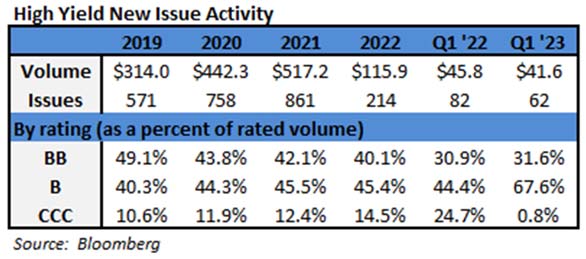
The Federal Reserve continued lifting rates in 2023. The Fed held two meetings this quarter and raised the Target Rate by 0.25% at both the February and March meetings. These increases were on top of the 425 basis points of raises the Fed completed in 2022. “We are committed to restoring price stability,” Chair Jerome Powell said at a press conference following the Fed’s two‐day meeting in March. “It is important that we sustain that confidence with our actions as well as our words.” The March hike took place in the midst of a banking sector scare. Powell did comment that the banking turmoil is “likely to result in tighter credit conditions for households and businesses, which would in turn affect economic outcomes,” but added, “It’s too soon to tell how monetary policy should respond.”i The Fed has spoken at length about the tightness in the labor market. After 475 basis points of raises, the tightness continues. In fact, the unemployment rate is currently at 3.6%, the same level at the start of the hiking cycle. It is likely that some cracks in labor will need to emerge prior to any Fed pivot to lower rates.
Intermediate Treasuries decreased 41 basis points over the quarter, as the 10-year Treasury yield was at 3.88% on December 31st, and 3.47% at the end of the first quarter. The 5‐year Treasury decreased 43 basis points over the quarter, moving from 4.00% on December 31st, to 3.57% at the end of the first quarter. Intermediate term yields more often reflect GDP and expectations for future economic growth and inflation rather than actions taken by the FOMC to adjust the Target Rate. The revised fourth quarter GDP print was 2.6%(quarter over quarter annualized rate). Looking forward, the current consensus view of economists suggests a GDP for 2023 around 1.0% with inflation expectations around 4.3%.ii
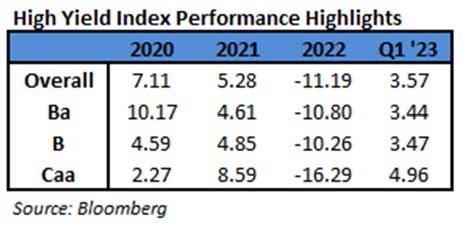
Being a more conservative asset manager, Cincinnati Asset Management Inc. does not buy CCC and lower rated securities. Additionally, our interest rate agnostic philosophy keeps us generally positioned in the five to ten year maturity timeframe. After the negative performance of last year, Q1 closed positive across each rating category. The lowest bucket of CCC did perform best over the quarter due to returns built up in January and February. With the banking scare in March, the CCC category returned ‐1.37% relative to the Index return of 1.07%. The quality focus that CAM is known for was a benefit in March. Given the positive quarterly return of the Index, our natural cash position was a drag on performance for Q1. Our credit selections within communications and consumer cyclicals were also a drag to performance. Benefiting our performance this quarter was our underweight in wirelines and communications and our credit selections in consumer noncyclicals, technology, and transportation.
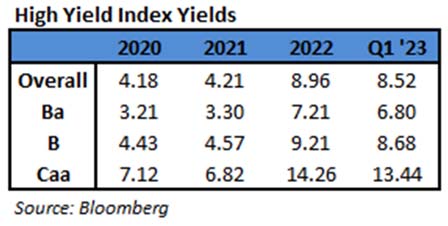
Being a more conservative asset manager, Cincinnati Asset Management Inc. does not buy CCC and lower rated securities. Additionally, our interest rate agnostic philosophy keeps us generally positioned in the five to ten year maturity timeframe. After the negative performance of last year, Q1 closed positive across each rating category. The lowest bucket of CCC did perform best over the quarter due to returns built up in January and February. With the banking scare in March, the CCC category returned ‐1.37% relative to the Index return of 1.07%. The quality focus that CAM is known for was a benefit in March. Given the positive quarterly return of the Index, our natural cash position was a drag on performance for Q1. Our credit selections within communications and consumer cyclicals were also a drag to performance. Benefiting our performance this quarter was our underweight in wirelines and communications and our credit selections in consumer noncyclicals, technology, and transportation.
The Bloomberg US Corporate High Yield Index ended the first quarter with a yield of 8.52%. Treasury volatility, as measured by the Merrill Lynch Option Volatility Estimate (“MOVE” Index), has picked up quite a bit the past 15 months. Over that timeframe, the MOVE has averaged 121 relative to a 62 average over 2021. The banking turmoil several weeks ago had the MOVE spike up to almost 200 and the 2 year Treasury had the widest intraday range since the early 1980s.iii The first quarter had four bond issuers default on their debt, taking the trailing twelve month default rate to 1.27%.iv The current default rate is relative to the 0.23%, 0.86%, 0.83%, 0.84% default rates from the previous four quarter end data points listed oldest to most recent. The fundamentals of high yield companies still look good considering the economic backdrop. From a technical view, fund flows were negative in each month of the quarter totaling ‐$24.3 billion.v No doubt there are risks, but we are of the belief that for clients that have an investment horizon over a complete market cycle, high yield deserves to be considered as part of the portfolio allocation.
The Fed will continue to remain a large part of the story throughout this year. While their message currently remains steadfast, market participants are pricing in a possible transition later this year. Although moving in the right direction, inflation is still too high, and the labor market is still too tight from the Fed’s point of view. This led the Fed in keep increasing rates in the face of the recent banking sector trouble. Market participant’s bets of a transition are suggesting that after a year of aggressive increases, there is not much further the Fed can push. The recession probability forecast currently stands at 65%. There are plenty of reasons to be cautious as lending standards have tightened, defaults are on the rise, and trouble brewing in the commercial real estate market is now on many investors’ radars. That said, supply chains are easing, demand is resilient, high yield maturities are low, and good fundamentals are still providing cushion. Our exercise of discipline and selectivity in credit selections is important as we continue to evaluate that the given compensation for the perceived level of risk remains appropriate. As always, we will continue our search for value and adjust positions as we uncover compelling situations. Finally, we are very grateful for the trust placed in our team to manage your capital.
This information is intended solely to report on investment strategies identified by Cincinnati Asset Management. Opinions and estimates offered constitute our judgment and are subject to change without notice, as are statements of financial market trends, which are based on current market conditions. This material is not intended as an offer or solicitation to buy, hold or sell any financial instrument. Fixed income securities may be sensitive to prevailing interest rates. When rates rise the value generally declines. Past performance is not a guarantee of future results. Gross of advisory fee performance does not reflect the deduction of investment advisory fees. Our advisory fees are disclosed in Form ADV Part 2A. Accounts managed through brokerage firm programs usually will include additional fees. Returns are calculated monthly in U.S. dollars and include reinvestment of dividends and interest. The index is unmanaged and does not take into account fees, expenses, and transaction costs. It is shown for comparative purposes and is based on information generally available to the public from sources believed to be reliable. No representation is made to its accuracy or completeness. Additional disclosures on the material risks and potential benefits of investing in corporate bonds are available on our website: https://www.cambonds.com/disclosurestatements/.
i Bloomberg March 22, 2023: Powell Stresses Commitment to Cooling Prices as Fed Hikes Rates
ii Bloomberg April 4, 2023: Economic Forecasts (ECFC)
iii Bloomberg April 4, 2023: Riding Brutal Yield Swings
iv JP Morgan April 3, 2023: “Default Monitor”
v CreditSights March 30, 2023: “Credit Flows”
